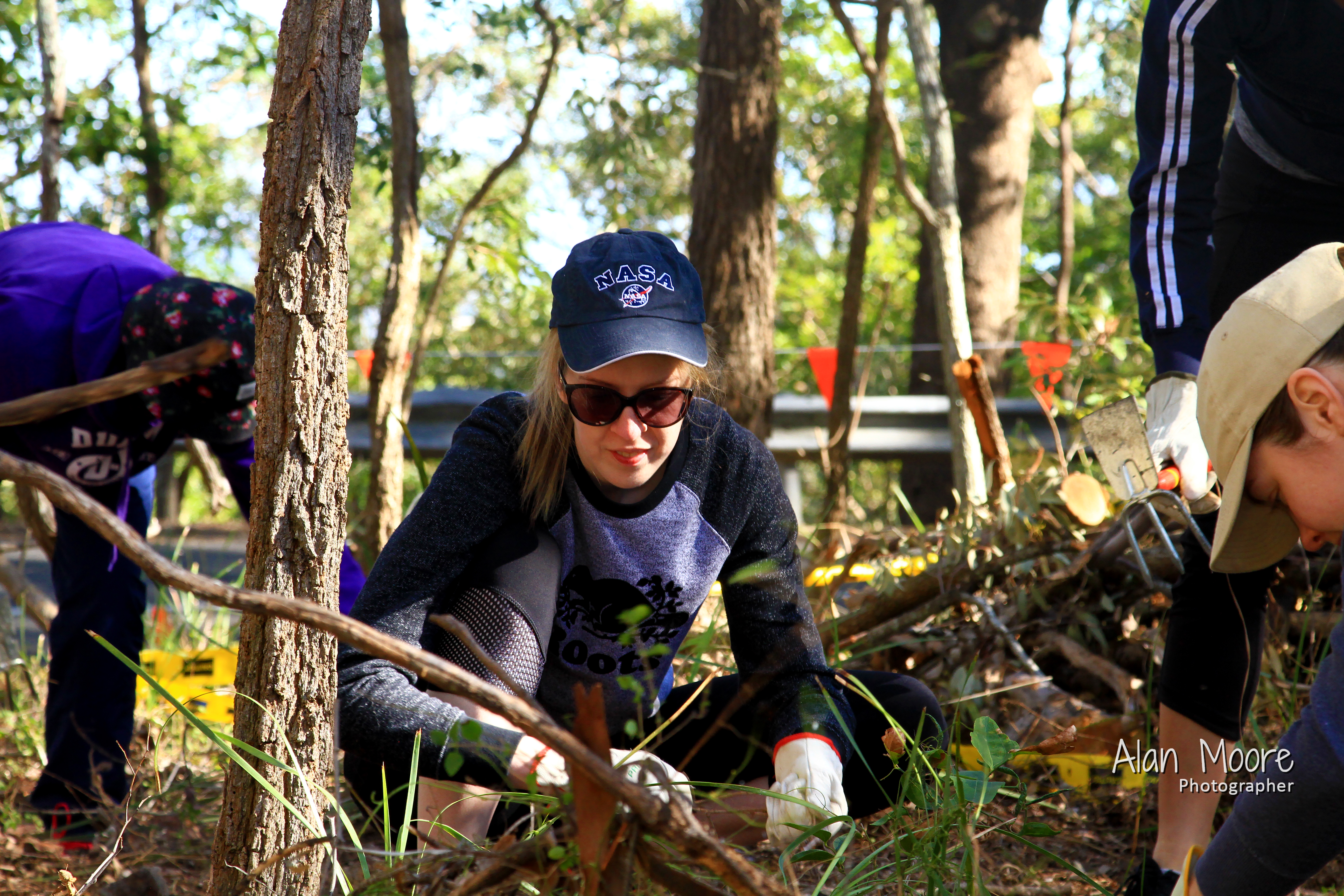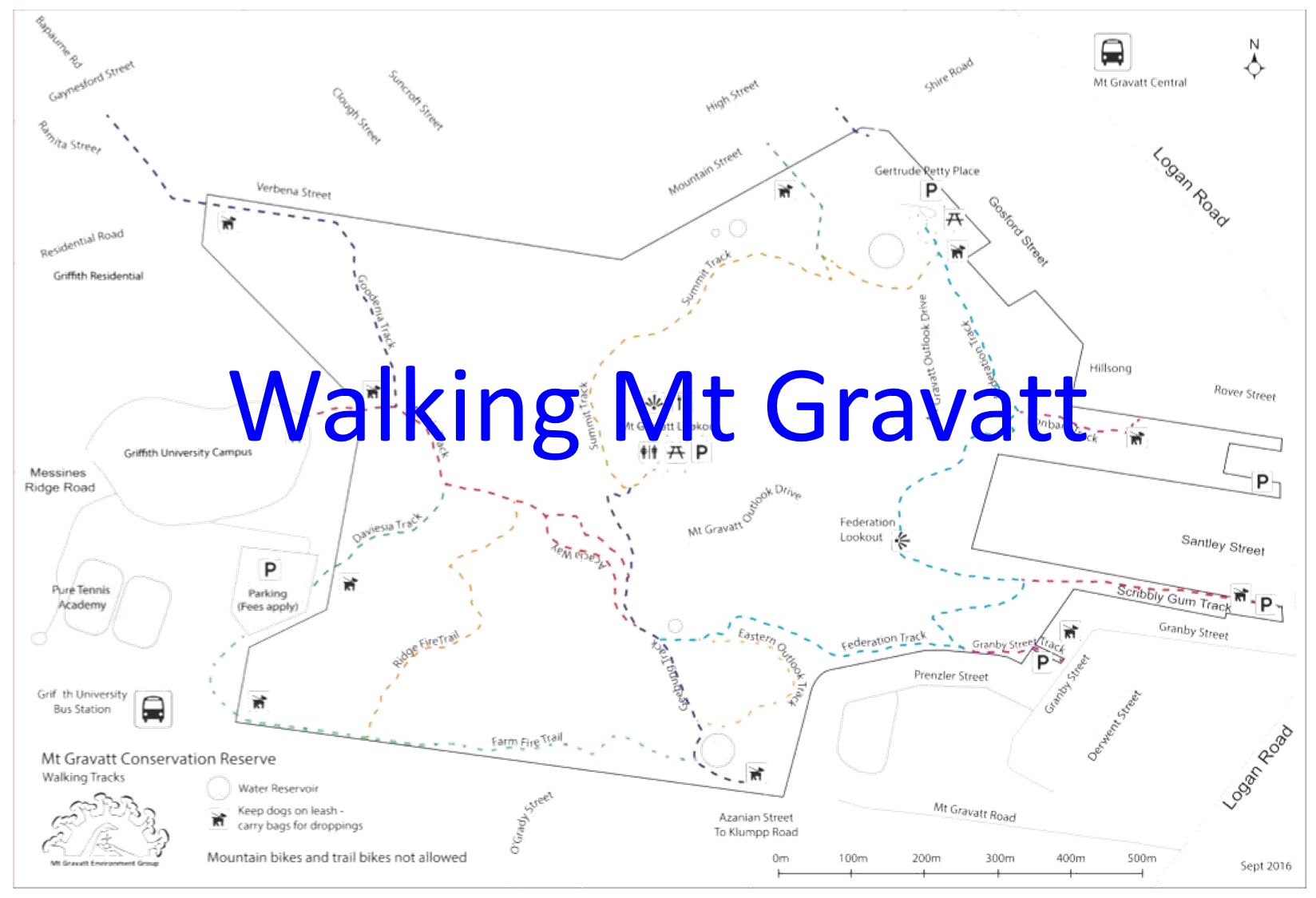By: Michael Fox

………….(l-r) Ann, Sarah, Liz & myself
I was honoured to lead an enthusiastic group of YHA Bushwalkers Queensland – variety YHA Bushies. The Bushies were interested in everything from plants and animals to the geology of the mountain.
.
.
.
Starting from Gertrude Petty Place we visited two Stingless Native Bee Trigona carbonaria hives then followed the Federation Track to Federation Lookout.

…………View from Federation Lookout
The Federation Lookout faces east with views to Mt Petrie, Mt Cotton and Stradbroke Island in the distance.
The track downhill from the Lookout shows the amount of quartz found on the mountain. There were some attempts to find gold but nothing came of it.
.
.

…………..Pink Planthopper Colgar sp
The next stage of the Federation Track, from the junction with the Scribbly Gum Track, took us past a number of Scribbly Gums Eucalyptus racemosa. The characteristic scribbles on the bark are created by caterpillars of the tiny Scribbly Gum moth.
We also found a new addition for our fauna species list. This cute Pink Planthopper Colgar sp. stayed still long enough for a photograph.

…………..Galahs cleaning nest hollow
Just above use a pair of Galahs Eolophus roseicapillus were cleaning out a nest hollow where a branch has broken off the tree.
.
.
.
At the top of Federation Track we inspected the small forest bird planting and one of the new interpretative signs. 
Sarah and Liz are members of the West End Greening Group – restoring the habitat at the end of Dauphin Terrace, Highgate Hill. So they were particularly interested in the signs and our methodology for creating the small bird habitat.
.
.

Quinine Bush/Bitter Bark Petalostigma pubescens
A break for tea and chocolate cake. I am told the Bushies consider cake an important resource for any walk in the bush.
We inspected the work eradicating Asparagus Fern Asparagus aethiopicus.
I also showed them the Wonga Wonga Vine Pandorea pandorana and Quinine Bush/Bitter Bark Petalostigma pubescens.
.
.

……….Basket Fern Drynaria rigidula
On to the main Fox Gully Bushcare site we talked about the nest boxes and the resident Squirrel Glider family.
The Bushies were very impressed with the way Basket Fern Drynaria rigidula is recovering with the removal of Fishbone Fern Nephrolepis cordifolia.
It was a real pleasure to show the Bushies Mt Gravatt Conservation Reserve.


































